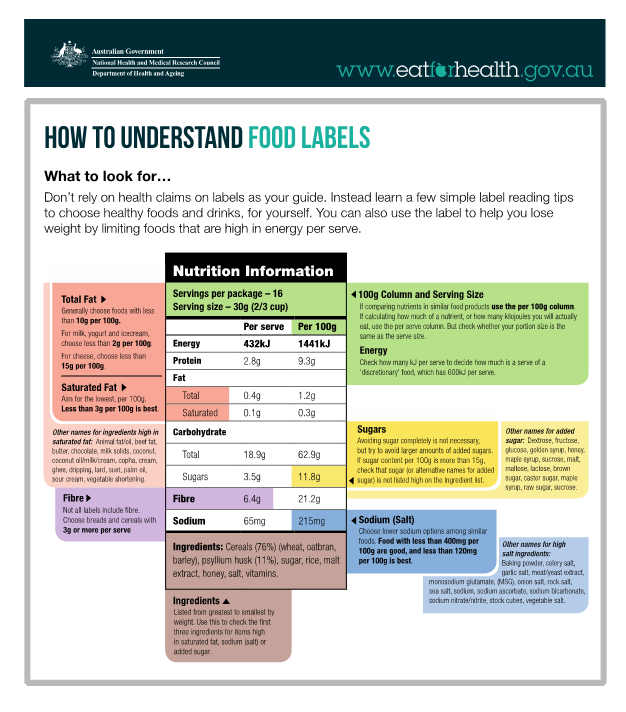29 Apr How do I read and understand food labels
An important part of making healthy eating choices is knowing which products to pick up at the supermarket. How we read food labels can be very intimidating, especially when turning a packet over and seeing all the numbers on the Nutrition Information Panel.
This blog post will hopefully fill you with confidence in reading these at your next supermarket trip!

Ingredients List
First is having a look at the ingredients list, which tells us not only what is in our product, but how much there is of each ingredient. Items are listed by weight, with the one contributing the most being listed first. We generally don’t want to see ingredients like sugar or sodium (salt) listed first, as this would mean they contribute the most out of any other ingredient in the product.
There are multiple names used for salt, added sugar and foods high in saturated fat, which can make reading these ingredients lists more challenging. Sometimes there will be multiple ingredients that all mean sugar is being added in, they’ve just used various names. Have a look at the image above, as there are examples of some of these variations in the sodium, sugar and saturated fat section.

Nutrition Information Panel
This section will be on every packaged food item and is where the majority of key information can be found. Again, the image above is a great resource to have when navigating this section of our food label.
An important note is that amounts of each nutrient will be provided as both per serve and per 100g or mL. When comparing products, it is important to use the /100g or mL column, as this allows for an equal comparison. Brands can make their own serving size for products, which means you can end up comparing items using two different amounts. The exception to this is when looking at products where you’d eat their serving sizes, such as a muesli bar or an individual yoghurt pouch. We also typically use serving size when comparing fibre content.
A selection of key nutrients will be listed on every Nutrition Information Panel, but depending on the product you’re looking at, some will be more relevant than others. For example, fibre would be a key nutrient in items like cereals and breads, but less relevant for dairy products. Instead, nutrients like calcium, protein and saturated fat would be of interest in these dairy products. Your personal goals will also help shape what you look for on these Nutrition Information Panels and whether certain food products are suitable.
Hopefully you now have the confidence to read food labels correctly.
To understand more about Health Star Ratings, check out previous blog: WHAT IS A HEALTH STAR RATING
For more information on reading labels, check out the Eat for Health website CLICK HERE.


